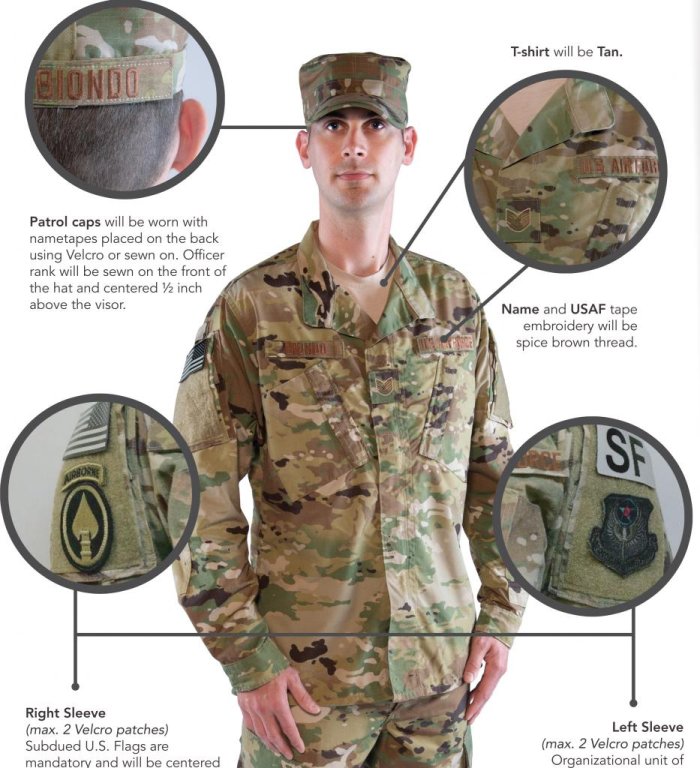Army Regulation On Gambling In Uniform
Personnel who will be advanced to a higher grade upon retirement have the option of wearing the insignia of that grade thereafter. Retired personnel on active duty will wear their uniform and insignia in the same manner as prescribed for personnel in the Active Army of corresponding grade and branch. Placement of Army awards (medals, decorations, badges, ribbons) on a Class A uniform is very specific in order and location, as described in Army Regulation AR 670-1. Proper order and placement on the uniform is essential to avoid disciplinary action. Soldiers are not authorized to wear distinctive uniforms or uniform items of the U.S. Army or of other U.S. Services with or on civilian clothes, except as authorized by this regulation. Recommending changes to Army uniforms. See DA Pam 670–1 for recommending changes to Army uniforms. These free and easy to donwload PDFs have tips and how-to's to keep your uniform updated to Regulation Standards. As uniform standards change, our guides change. So always check back for the newest guides! Quick Ribbon notes for Army Blue Uniforms: Male personnel wear the ribbons centered 1/8 inch above the left pocket. Chapters 1 and 2 of this regulation al- interim changes. Interim changes to this dards of conduct required of all Department so apply to all officers and enlisted person- regulation are not official unless they are au-of the Army @A) personnel, regardless of nel of the U.S. Army Reserve and of the thenticated by The Adjutant General.
Article may contain affiliate links. As an Amazon Associate I earn from qualifying purchases.
Welcome to our guide on the Wear and Appearance of Army Uniforms and Insignia. The information included here is from AR 670-1, but we’ve made it easy to navigate. In addition, we’ve added notes to clarify sections that are confusing or unclear.
Please note that our additions are not part of the Army Regulations – they are only provided to help you understand the policies better. If you still have questions, you should consult with your commander as they have final say on all uniform and appearance matters.
Chapter 1: Introduction
1–1. Purpose
The Army is a profession. A Soldier’s appearance measures part of his or her professionalism. Proper wear of the Army uniform is a matter of personal pride for all Soldiers. It is indicative of esprit de corps and morale within a unit. Soldiers have an individual responsibility for ensuring their appearance reflects the highest level of professionalism. Leaders, at all levels, have a responsibility for implementing and applying the standards contained in this regulation to ensure the best interests of the Army, including our shared traditions and customs. This regulation prescribes the authorization for wear, composition, and classification of uniforms, and the occasions for wearing all personal (clothing bag issue), optional, and commonly worn organizational clothing and individual equipment uniforms. It prescribes the uniforms, awards, insignia, and accouterments authorized for wear. It also provides general information on the authorized material and design of uniforms and the uniform quality control system.
1–2. References
See appendix A.
1–3. Explanation of abbreviations and terms

See the glossary. The descriptive definitions for the following terms are in the glossary and provide aid in the understanding of this regulation: conservative, eccentric, exaggerated, extreme, fad(dish), neat, and unsightly.
1–4. Responsibilities
See chapter 2 for responsibilities.
1–5. Statutory Authority
- Portions of this regulation are punitive. Violation of the specific prohibitions and requirements of specific portions by Soldiers may result in adverse administrative action and/or charges under the provisions of the UCMJ.
- Only uniforms, accessories, and insignia prescribed in this regulation, or in the common table of allowance (CTA), or as approved by Headquarters, Department of the Army (HQDA), will be worn by personnel in the U.S. Army. Unless specified in this regulation, the commander issuing the clothing and individual equipment will establish wear policies for organizational clothing and individual equipment. No item governed by this regulation will be altered in any way that changes the basic design, or the intended concept of fit, as described in Technical Manual (TM) 10–227 and Army Regulation (AR) 700–84, including plating, smoothing, or removing detailed features of metal items, or otherwise altering the color or appearance.
- AR 70–1 prescribes Department of the Army (DA) policies, responsibilities, and administrative procedures by which all clothing and individual equipment used by Army personnel are initiated, designed, developed, tested, approved for acquisition, fielded, and modified.
- AR 385–10 prescribes DA policies, responsibilities, and administrative procedures and funding for protective clothing and equipment.
- e. In accordance with Section 771, Chapter 45, Title 10, United States Code, no person except a member of the U.S. Army may wear the uniform, a distinctive part of the uniform, or any part of which is similar to a distinctive part of the U.S. Army uniform, unless otherwise authorized by law. Soldiers are not authorized to wear distinctive uniforms or uniform items of the U.S. Army or of other U.S. Services with or on civilian clothes, except as authorized by this regulation.

1–6. Recommending changes to Army uniforms
See DA Pam 670–1 for recommending changes to Army uniforms
Army Regulation On Gambling In Uniforms

1–7. Classification of service and combat/utility/field uniforms
See DA Pam 670–1 for classification of uniforms.
Article may contain affiliate links. As an Amazon Associate I earn from qualifying purchases.
Welcome to our guide on the Wear and Appearance of Army Uniforms and Insignia. The information included here is from AR 670-1, but we’ve made it easy to navigate. In addition, we’ve added notes to clarify sections that are confusing or unclear.
Please note that our additions are not part of the Army Regulations – they are only provided to help you understand the policies better. If you still have questions, you should consult with your commander as they have final say on all uniform and appearance matters.
Chapter 1: Introduction
1–1. Purpose

The Army is a profession. A Soldier’s appearance measures part of his or her professionalism. Proper wear of the Army uniform is a matter of personal pride for all Soldiers. It is indicative of esprit de corps and morale within a unit. Soldiers have an individual responsibility for ensuring their appearance reflects the highest level of professionalism. Leaders, at all levels, have a responsibility for implementing and applying the standards contained in this regulation to ensure the best interests of the Army, including our shared traditions and customs. This regulation prescribes the authorization for wear, composition, and classification of uniforms, and the occasions for wearing all personal (clothing bag issue), optional, and commonly worn organizational clothing and individual equipment uniforms. It prescribes the uniforms, awards, insignia, and accouterments authorized for wear. It also provides general information on the authorized material and design of uniforms and the uniform quality control system.
1–2. References
See appendix A.
1–3. Explanation of abbreviations and terms
See the glossary. The descriptive definitions for the following terms are in the glossary and provide aid in the understanding of this regulation: conservative, eccentric, exaggerated, extreme, fad(dish), neat, and unsightly.
1–4. Responsibilities
See chapter 2 for responsibilities.
1–5. Statutory Authority
- Portions of this regulation are punitive. Violation of the specific prohibitions and requirements of specific portions by Soldiers may result in adverse administrative action and/or charges under the provisions of the UCMJ.
- Only uniforms, accessories, and insignia prescribed in this regulation, or in the common table of allowance (CTA), or as approved by Headquarters, Department of the Army (HQDA), will be worn by personnel in the U.S. Army. Unless specified in this regulation, the commander issuing the clothing and individual equipment will establish wear policies for organizational clothing and individual equipment. No item governed by this regulation will be altered in any way that changes the basic design, or the intended concept of fit, as described in Technical Manual (TM) 10–227 and Army Regulation (AR) 700–84, including plating, smoothing, or removing detailed features of metal items, or otherwise altering the color or appearance.
- AR 70–1 prescribes Department of the Army (DA) policies, responsibilities, and administrative procedures by which all clothing and individual equipment used by Army personnel are initiated, designed, developed, tested, approved for acquisition, fielded, and modified.
- AR 385–10 prescribes DA policies, responsibilities, and administrative procedures and funding for protective clothing and equipment.
- e. In accordance with Section 771, Chapter 45, Title 10, United States Code, no person except a member of the U.S. Army may wear the uniform, a distinctive part of the uniform, or any part of which is similar to a distinctive part of the U.S. Army uniform, unless otherwise authorized by law. Soldiers are not authorized to wear distinctive uniforms or uniform items of the U.S. Army or of other U.S. Services with or on civilian clothes, except as authorized by this regulation.
1–6. Recommending changes to Army uniforms
See DA Pam 670–1 for recommending changes to Army uniforms
1–7. Classification of service and combat/utility/field uniforms

Army Regulation On Gambling In Uniform Law
See DA Pam 670–1 for classification of uniforms.